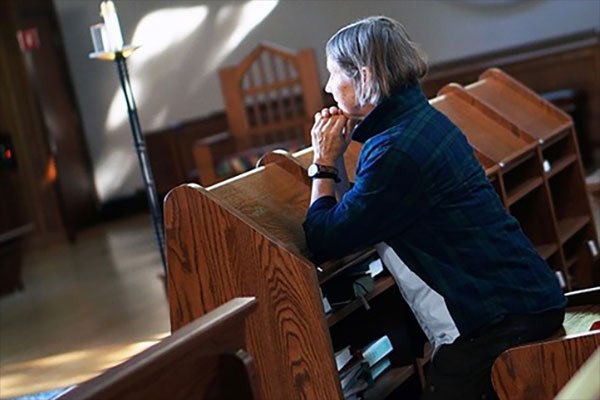
Blog

A World Gone Mad
Abba Anthony said, “A time is coming when men will go mad, and when they see someone who is not mad, they will attack him saying, ‘You are mad, you are not like us.’ “

Highlights of Cynthia’s Fall and Winter Teaching Schedule
I know that many of you are beginning to arrange your fall and winter schedules and are trying to figure out which on-the -ground CB retreats will work best with your particular interests and experience base. With that in mind, I thought I’d walk you through some of the highlights of my fall and early winter teaching schedule. Most of these events are now posted on both Wisdom Waypoints and cynthiabourgeault.org, but here’s the quick summary

Maundy Thursday: A Journey Through Holy Week
This is day four of a six day free Holy Week offering. On this Maundy Thursday and beginning of the Easter Triduum, in the Passion Libretto Part III: The Prince of this World, Cynthia talks about Jesus facing what is in the shadows of collective psychosis, madness, and frenzy. She invites us to do the same by way of asking ourselves how we might stand in truth and courageously see what is in our own shadow, how we participate in collective sin and stoke the fires of madness and frenzy. This gain in self-knowledge and deepening sense of humility allows us to stay in the truth which always sets us free.

Holy Wednesday: A Journey Through Holy Week
This is day three of a six day free Holy Week offering. On this Holy Wednesday, in the Passion Libretto Part II: Gethsemane, Cynthia brings us to Jesus’ struggle and anguish in the Garden of Gethsemane. She says it is a day when the lights go out and all is winding down before things go completely dark. It is a spiritually generative yet excruciating birthing time when Jesus looked to the support of his friends to stand by and stay awake with him in the pain, yet they could not be present to him.

Holy Tuesday: A Journey Through Holy Week
This is day two of a six day free Holy Week offering. On this Holy Tuesday, in the Passion Libretto Part I: The Farewell Discourse, Cynthia focuses on the voluntary nature of substituted love reminding us that Jesus freely gave of his life rather than being coerced into it as a victim of hate. She shares why she chose the text on the Farewell Discourse from the Gospel of John to start out and set the meaning and context of the passion.

Holy Monday: A Journey Through Holy Week
Welcome, this Holy Monday to the first of six emails you will receive, one per day from today through Holy Saturday. Every day will offer an invitation to each of us for reflection, prayer and meditation individually yet together in the heart of God. These daily emails will include written text, music, and a video commentary by our teacher Cynthia Bourgeault focusing on a five part libretto she put together back in 2004.

Farewell, beloved Snowmass
If I have not yet publicly commented on the apparently now-imminent closing of St. Benedict’s Monastery, it is not because I have no feelings on the matter. Quite the contrary, it’s because my heart is so flooded with feelings that I find myself really, for once, at loss for words. What can be said, except in the language of tears?

New Book: The Corner of Fourth and Nondual by Cynthia Bourgeault
Cynthia describes the foundations of her theology: a cosmological seeing with the eye of the heart, and classic Benedictine daily rule informed and enlightened by wisdom from the Asian traditions.

Message to the Wisdom Community from Cynthia and Wisdom Waypoints
It’s that time of year again, and I have the pleasure and honor of inviting you to step up to the plate and contribute as generously as you can to Wisdom Waypoint’s annual fundraising campaign.

Cynthia Bourgeault on The Common Good
In this video interview Cynthia Bourgeault joins Garrison Institute founder Jonathan F.P. Rose for a conversation on the common good.